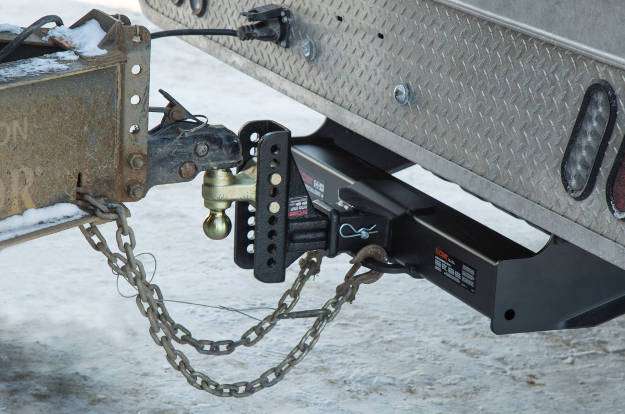Choosing the right trailer hitch and connection type is essential for safe and efficient towing. The world of trailer hitches is diverse, with various options designed to suit different towing needs and vehicle configurations. In this essay, we will explore the different hitches and types of connections for trailers, highlighting their benefits and applications. Additionally, two relevant statistics will be presented to underscore the importance of proper hitch selection and safety.
Table of Contents
Statistics on Trailer Towing
Before delving into the details of trailer hitches and connections, let’s consider two statistics that emphasize the significance of safe and responsible towing:
- According to the National Highway Traffic Safety Administration (NHTSA), in the United States, there were over 700 fatalities and approximately 25,000 injuries resulting from accidents involving trailers in 2019. Proper hitch selection and safe towing practices are critical in reducing the risks associated with towing.
- A study by the American Automobile Association (AAA) found that an estimated 60% of towing-related accidents were caused by trailer sway or improper weight distribution. This statistic underscores the importance of choosing the right hitch and connection method to maintain control and stability while towing.
Now, let’s explore the different types of trailer hitches and connections, along with their benefits.
1. Ball Hitch
The ball hitch is one of the most common and versatile types of trailer hitches. It consists of a ball-mounted on the towing vehicle’s rear bumper or a specialized hitch receiver, and a coupler on the trailer tongue that fits over the ball. The benefits of a ball hitch include:
– Ease of Use: Ball hitches are straightforward to use, making them ideal for a wide range of trailers, from small utility trailers to larger boat trailers and camper trailers.
– Versatility: They are compatible with various trailer coupler sizes, making it relatively simple to match the appropriate ball size with the trailer’s requirements.
– Affordability: Ball hitches are generally cost-effective, making them an excellent choice for budget-conscious individuals and occasional trailers users.
However, it’s essential to select the correct ball size and ensure proper installation to prevent accidents and trailer sway.
2. Pintle Hitch
Pintle hitches are robust and commonly used for heavy-duty towing applications. They consist of a solid, cylindrical pin (pintle) mounted on the towing vehicle’s hitch receiver and a lunette ring on the trailer tongue. The benefits of pintle hitches include:
– Strength and Durability: Pintle hitches are designed to handle heavy loads, making them suitable for industrial and agricultural applications, as well as military and construction use.
– Articulation: They allow for greater articulation, which can be advantageous when towing on uneven terrain, as it provides flexibility and helps maintain control.
– Security: Pintle hitches are known for their secure connection, reducing the risk of accidental detachment during towing.
However, pintle hitches can be less user-friendly than ball hitches and may require more time for coupling and uncoupling.
3. Fifth-Wheel Hitch
Fifth-wheel hitches are commonly used for towing large and heavy trailers, such as fifth-wheel campers and horse trailers. These hitches are distinct in that they mount in the bed of a pickup truck, offering increased stability and control. The benefits of fifth-wheel hitches include:
– Enhanced Stability: The placement of the hitch in the truck bed allows for a closer connection between the towing vehicle and the trailer, resulting in improved stability and reduced trailer sway.
– Higher Towing Capacity: Fifth-wheel hitches typically have higher towing capacities compared to conventional ball hitches, making them ideal for heavy loads.
– Spaciousness: The setup of a fifth-wheel hitch leaves the bed of the truck open for additional cargo or even as living space in the case of RVs.
However, it’s important to note that fifth-wheel hitches are designed for use with pickup trucks and may not be suitable for all towing vehicles.
4. Gooseneck Hitch
Similar to fifth-wheel hitches, gooseneck hitches are suitable for heavy towing applications and are typically used with pickup trucks. They consist of a ball and coupler system mounted in the bed of the truck. The benefits of gooseneck hitches include:
– Exceptional Stability: Gooseneck hitches provide exceptional stability and control, making them suitable for large trailers and heavy loads.
– Tighter Turning Radius: They offer a tighter turning radius compared to fifth-wheel hitches, which can be advantageous when navigating tight spaces or making sharp turns.
– Versatility: Gooseneck hitches can be used with various trailer types, including horse trailers, flatbeds, and RVs, making them versatile for different towing needs.
However, installing a gooseneck hitch typically requires drilling a hole in the truck bed, which may not be desirable for some truck owners.
5. Weight Distribution Hitch
Weight distribution hitches are used to distribute the trailer’s weight more evenly across the towing vehicle’s axles, improving stability and control. These hitches are often used with conventional ball hitches. The benefits of weight distribution hitches include:
– Enhanced Stability: By distributing the weight effectively, these hitches reduce the risk of trailer sway and enhance stability during towing.
– Improved Braking: Weight distribution hitches can improve the effectiveness of the towing vehicle’s brakes, reducing the stopping distance and enhancing safety.
– Leveling Capability: They help level the towing vehicle and the trailer, ensuring that both are on an even plane and reducing wear and tear on the suspension and tires.
Weight distribution hitches are especially valuable when towing heavy loads or when the towing vehicle and trailer have disparate weight distributions.
Conclusion
Selecting the right trailer hitch and connection type is essential for safe and efficient towing. Whether you’re towing a small utility trailer or a heavy camper, there’s a hitch designed to suit your needs. The diverse range of hitches, from ball hitches and pintle hitches to fifth-wheel hitches, gooseneck hitches, and weight distribution hitches, offers a solution for every towing scenario.
The benefits of each hitch type are clear: ball hitches offer ease of use and versatility, pintle hitches provide strength and security, fifth-wheel hitches offer enhanced stability and higher towing capacity, gooseneck hitches combine stability with a tighter turning radius, and weight distribution hitches improve stability and braking. By selecting the right hitch and connection method, individuals and businesses can enjoy safe and efficient towing, minimizing risks on the road and ensuring that their trailers are towed with precision and control.






